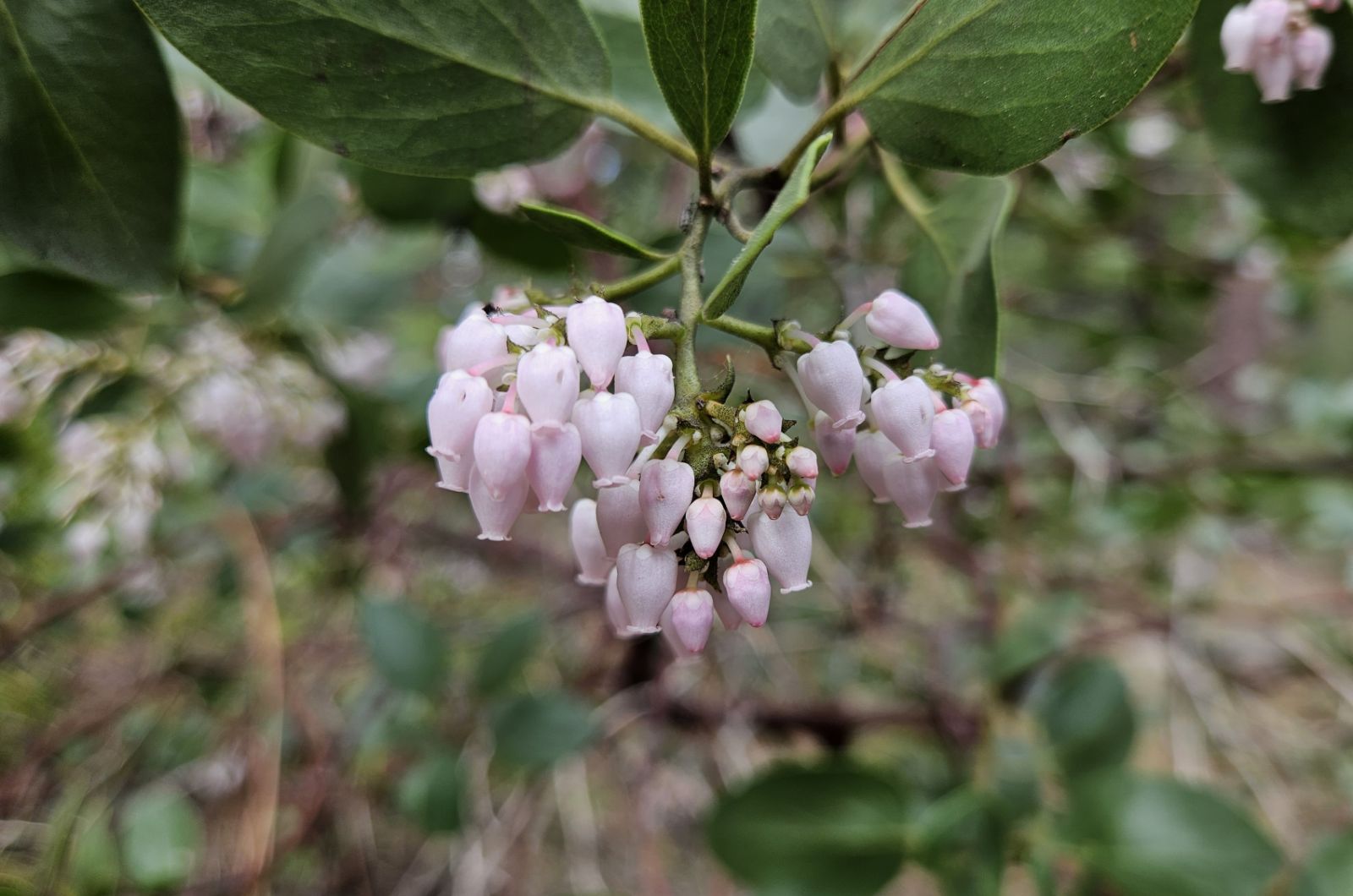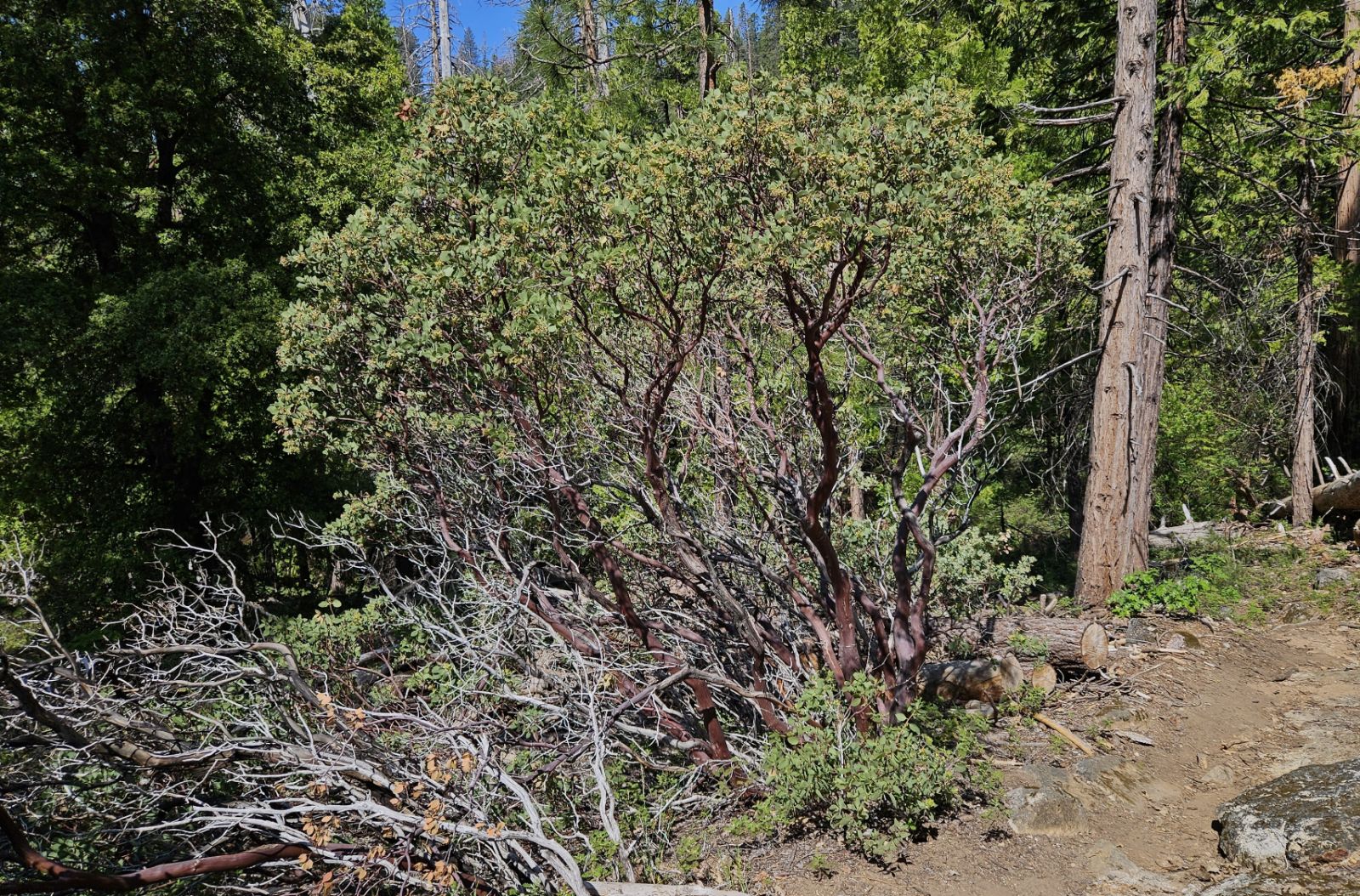Arctostaphylos patula
Credits
Article from Bean's Trees and Shrubs Hardy in the British Isles
Recommended citation
'Arctostaphylos patula' from the website Trees and Shrubs Online (treesandshrubsonline.
Genus
Common Names
- Greenleaf Manzanita
A spreading, much-branched evergreen shrub 3 to 7 ft high; stems with a bright red-brown bark, borne on a thickened root-stock from which the plant quickly regenerates after fires. Branchlets finely downy and usually glandular. Leaves bright green, broadly ovate or elliptic to almost round, 1 to 13⁄4 in. long, obtuse or rounded at the apex, rounded to slightly heart-shaped at the base, glabrous; leaf-stalks finely downy and glandular. Flowers pinkish or white, urn- shaped, about 1⁄4 in. long, borne in corymbs or loose panicles; ovary glabrous. Fruit globose, flattened at the apex, dark brown to almost black.
Native of western N. America, where it grows in open coniferous forest dominated by Pinus ponderosa or Abies amabilis. In Britain, it has proved one of the most satisfactory of the larger manzanitas. A plant on the rock garden at Edinburgh, Dr Fletcher tells us, flourished for many years in an exposed position, until it was eventually blown over and failed to recover. The taller arctostaphylos, he adds, are not very wind-firm and do not take kindly to transplanting.
From the Supplement (Vol. V)
This species is proving hardy and ornamental in the Chelsea Physic Garden, London, suffering no damage in the late winter of 1986. Introduced from the Vancouver Botanic Garden in 1971, it received an Award of Merit in 1984 (as A. pringlei).


